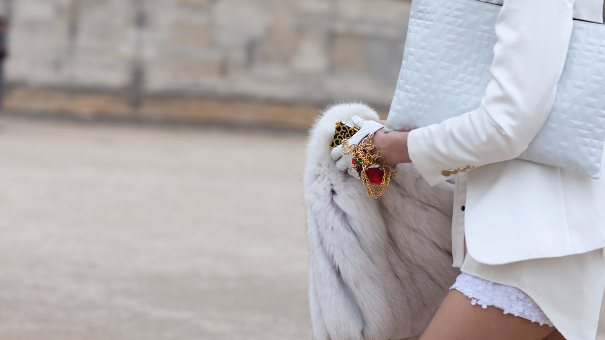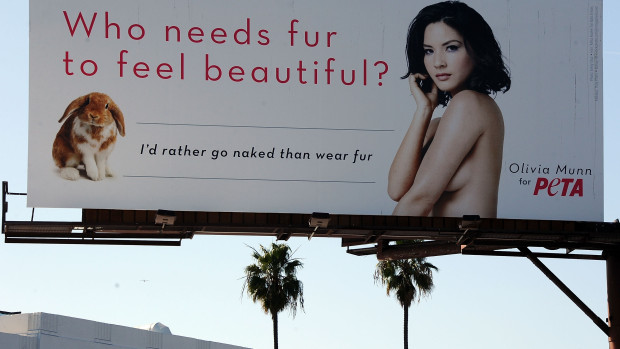Paris Fashion Week might be over, but the buzz over the use of fur and animal skins in luxury fashion is just warming up, with the recent Hermes Birkin Bag furore adding fuel to the fire. Here, Positive Luxury takes a closer look at the debate.

Paris Fashion Week might be over, but the buzz over the use of fur and animal skins in luxury fashion is just warming up, with the recent Hermes Birkin Bag furore adding fuel to the fire. Here, Positive Luxury takes a closer look at the debate.
Paris Fashion Week might be over, but the buzz over the use of fur and animal skins in luxury fashion is just warming up.
Stella McCartney, Calvin Klein, Simone Rocha, Tommy Hilfiger, and Ralph Lauren, are just some of the luxury fashion designers that already shun fur, whilst Hugo Boss recently pledged to be “fur free” by the end of next year. The recent Hermes Birkin Bag furore has added fuel to the fire and the discussion is back in the spotlight.
Here, Positive Luxury CEO Diana Verde Nieto takes a closer look at the debate.
Owning a fur coat was once considered the highest of luxuries. Glamorous, sensual and expensive, fur meant business. In post-war Britain, an estimated two in three women owned an item made from fur, even if most could only dream of owning a full coat.
By the 1950s, fur sales were already suffering from the effects of changing fashion and better central heating. Thirty years later, they took a more dramatic dive following direct action in the UK by the newly-formed and uncompromisingly militant Animal Liberation Front and shocking campaigns from PETA (People for the Ethical Treatment of Animals).
Fur-wearing members of the public were sprayed with red paint by protestors. Fur farms were attacked. In 1980 Lynx, the animal welfare trust, published a David Bailey photograph of a model trailing a fur coat oozing blood along a catwalk with the slogan: “It takes up to 40 dumb animals to make this, but only one to wear it”. Celebrities disavowed fur. By the 1990s, many fur retailers were out of business and leading department stores such as Debenhams and Harrods had closed their fur departments. In 2002, fur farming was outlawed in the UK.
“ The luxury industry has always held onto its furry heritage that little bit tighter ”
Since then, PETA has continued to campaign against the use of natural fur; its ‘Naked’ campaign has seen the likes of Eva Mendes, Olivia Munn and Khloe Kardashian posing nude to promote the fact that they’d rather go naked than wear the skins of dead animals.
But the luxury industry, aligned as it is with the promises of fur – glamourous, sensual and expensive – has always held onto its furry heritage that little bit tighter. On today’s catwalks, fur is not all that uncommon. In fact, today there are over 500 designers using it in their ready-to-wear collections.
Organisations such as the International Fur Trade Federation, of which former MP Mark Oaten is the chief executive, claim that fur can be cruelty-free. He argues that fur collected from animals whose welfare has been looked after is higher quality, and therefore more valuable to customers and consumers alike.
“There’s strong evidence that farmers who take care of the animal’s welfare are able to sell their fur for a higher price”, he said. “There’s a dual encouragement: they know that if they don’t have high welfare standards, they will be expelled from the trade association; they also know they can get a better price for the fur if it has come from one of the farms with the very high standards and certification schemes.”
This is all very well and good, but it relies on transparent, compliant supply chains that can be audited regularly; this is hard to achieve for any brand, let alone those in a global industry with complex supply chains.
“ It’s impossible to conduct audits across the global supply chain that can ever ensure that animals aren’t being mistreated ”
According to Yvonne Taylor, UK Senior Programmes Manager at PETA, “It’s impossible to conduct audits across the global supply chain with the frequency or thoroughness that can ever ensure that animals aren’t being mistreated for their products.
Companies can try to reduce harm, but there’s no way to eliminate it. Suppliers will often intentionally mislead their contractors, telling them what they want to hear. Policies that prohibit cruelty go unenforced because farmers use the quickest and the cheapest methods, which inevitably injure the animals.”
Complex and contentious though it is, some argue that animal welfare is a mere sideshow to the more important question of environmental sustainability. For example, natural pelts must be “dressed” (tanned) in a process that produces greenhouse gases and can result in various types of pollution to land, air and water.
If the pelts are farmed – as the vast majority are – their environmental footprint is increased considerably by the farmer’s use of food, energy and water, by the tendency of farm animals to emit carbon-intensive methane, and by the need to transport the pelts over long distances. Faux fur, on the other hand, is industrially produced from fossil minerals (including oil) in an energy-intensive industrial process that itself releases significant quantities of carbon dioxide and other greenhouse gases.

PETA’s ‘Naked’ campaign, starring Olivia Munn.
Pro- and anti-fur proponents argue about the relative carbon intensity of real and faux fur; but two things are for sure: animals used for both food and fur are more environmentally efficient than ones bred for a single purpose; and if you really want to produce low carbon fur, its better to use animals humanely culled from well managed, wild populations.
Best of all, take a leaf out of Petite Mort’s book and use roadkill; you shouldn’t be short of supply if, like its founder Pamela Paquin, you can find some way of harvesting the million or so animals that, according to US non-profit Culture Change, are killed on America’s roads every day.
When asked if fur can ever be sustainable, Mr Oaten was keen to push fur’s natural credentials: “It’s one of the most natural products you can get: it comes from a natural source; it’s biodegradable; it often lasts for generations. It’s a product that’s for life, not for landfill. It’s not a fast fashion product.”
Faux-fur, on the other hand, is often made from polyester or nylon, both of which are made from oil and neither of which are biodegradable. In 2004, Teresa Platt, Executive Director of America’s Fur Commission, announced that one gallon of oil was needed to make three faux-fur jackets.
“ A University of Michigan study found a faux fur coat to be twenty times less energy intensive than a farmed one ”
Sustainability writer and advisor, Anthony Kleanthous gives us a more balanced argument: “Natural fur can be sustainable if it is responsibly harvested and prepared. For example, it must be harvested without threatening the animals that provide it; from carefully managed wild populations, carrion or animals that are also used for food. Faux fur eliminates the risk of cruelty to animals, but is made from irreplaceable natural minerals and is not biodegradable. Personally, I wouldn’t want to be without my Canadian trapper’s rabbit skin hat, even though I know it was stitched together in China; I just hope no bunnies suffered it its production and that they provided someone with a good meal.”
So which really is better for the environment – fur or faux? Good, recent data is hard to come by; polarised camps cherry-pick figures and still argue over a flawed and contentious 1979 study by the University of Michigan study that found a faux fur coat to be twenty times less energy intensive than a farmed one. Industry needs to be more transparent about the lifecycle impacts of its various products; and someone needs to capture and compare the data in a transparent and scientific way.
The arguments for and against fur have been raging for decades, and I don’t intend to quell them here; but designers, manufacturers and retailers need to stay abreast of the ever-changing beliefs and attitudes of their customers as well as the real impacts of their products on both people and planet.
To further investigate the luxury and sustainability on Luxury Society, we invite you to explore the related materials as follows:
– Luxury, Sustainability & Best Practice
– From Sustainable Luxury to Luxurious Sustainability
– Luxury Watchmakers Focus on Sustainability










